Relativistic jets
Yuri Lyubarsky
The primary observational fact that emerged from studies of a large class of astrophysical sources is the occurrence of highly collimated outflows. On a galactic scale, jets are found emerging from radio galaxies and quasars powered by the release of gravitational energy near the supermassive black hole at the galaxy's center. The observed velocities in these jets reach 0.999 of the speed of light. Similar jets, though on a much smaller scale, can develop around the accretion disks of neutron stars and stellar black holes; these systems are often called microquasars. The relativistic jets are also invoked to explain the powerful cosmic gamma-ray
bursts even though they could not be resolved by our telescopes. All cosmic jet sources may be connected by a common basic mechanism. A promising model is magnetohydrodynamic acceleration by rotating, twisted magnetic fields. The basic idea is that a strong magnetic field threading the rotating central object (black
hole and the surrounding accretion disk) serves to convert the rotational energy to the outward directed Poynting flux. We study the basic properties of such electromagnetic jets paying special attention to physical mechanisms responsible for the transformation of the electromagnetic energy into the plasma and radiation energy.
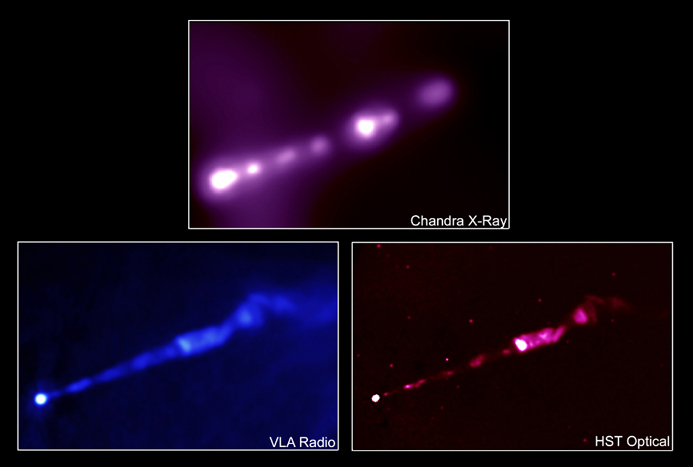 |
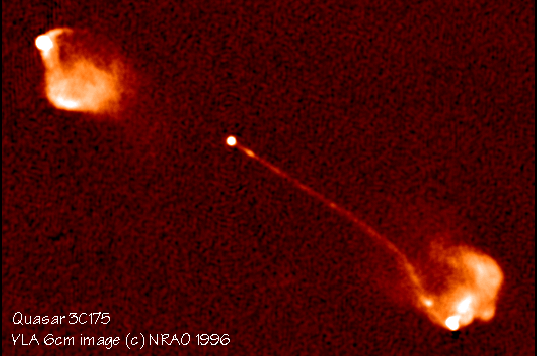 |
| Figure 1: Jet from the radio galaxy Virgo A in different bands. | Figure 2: Jet from the quasar 3C175. |
Pulsars
Yuri Lyubarsky
Enigmatic, rapidly pulsating radio sources, called pulsars, were discovered more than 40 years ago. They produce beams of radio waves which sweep around the sky like a lighthouse, often hundreds of times a second. Some of them generate also intense beams of gamma-rays. It was found that the beams are radiated out from rapidly rotating, extremely dense neutron stars; a typical pulsar is only around 10 km in diameter (with the mass as large as the solar mass!) and has a magnetic field trillions of times stronger than Earth’s. Such extreme physical conditions are well beyond those attainable in terrestrial laboratories and it is no wonder that, in spite of the great amount of effort that has been expended to understand physics of pulsars, the mechanisms that generate their intense radiation beams remain largely a mystery. We develop theoretical models of the electromagnetic emission from the relativistic plasma within the pulsar magnetosphere. Confronting the calculated emission pattern with observations would tell us a great deal about the fundamental physics behind pulsars.
 |
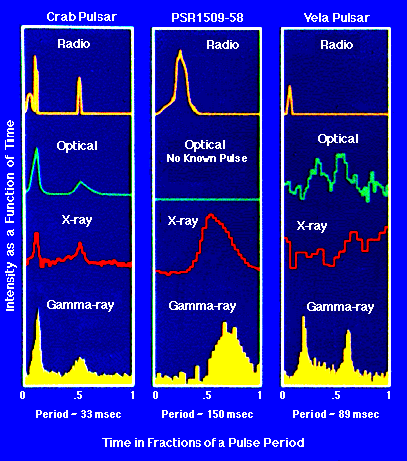  |
| Figure 1: Pulsar magnetosphere. | Figure 2: Pulse shapes of a few pulsars from the radio to gamma-ray bands. |
Collisionless shocks
Michael Gedalin
Shocks form in a supersonic flow which encounters an obstacle and has to suddenly decelerate to subsonically flow around the body. Alternatively, a gas expanding supersonically into ambient medium produces a shock moving ahead of the gas. Such shocks are very ubuquitous in space where they propagate in collisionless plasmas and generate high energy particles. The latter are responsible for the emission coming from such objects as supernovae remnants (Fig. 1) and gamma-ray bursts (Fig. 2) and their afterglows (Fig. 3). Collisionless shocks are wonderful natural laboratories which allow to learn fundamental processes such as particle dynamics in electromagnetic fields (which may be very peculiar and unexpected), acceleration to relativistic energies in natural accelerators, nonlinear interactions in plasmas and nonlinear structure formation. We study the internal structure of collisionless shocks (1, 2) and the processes of the charged particle energization (3, 4, 5).
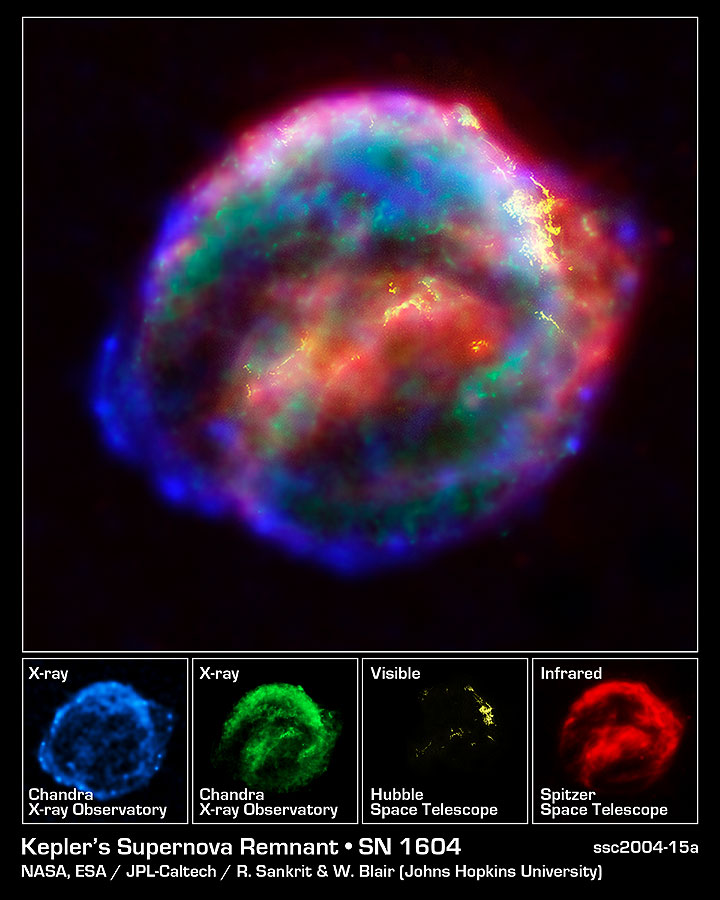 |
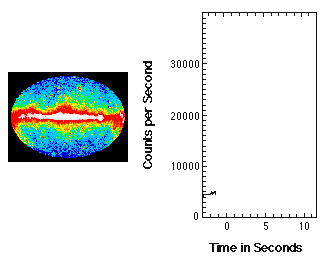 |
|
| Figure 1: Supernovae Remnants | Figure 2: Gamma Ray Bursts | |
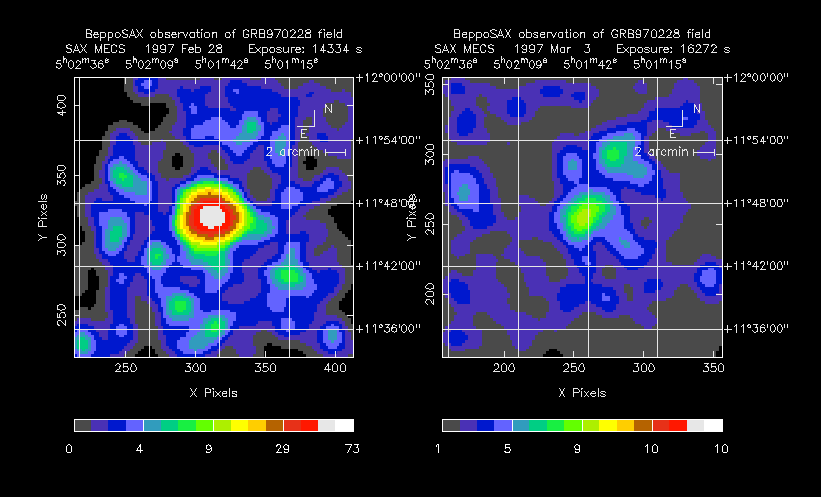 |
||
| Figure 3: Gamma Ray Burst Afterglow | ||
Space Weather
Michael Gedalin
The Sun governs the life of the Earth. Solar-terrestrial relations occur not only via radiation coming to the Earth but also via time-varying plasma flow (Fig. 1). This solar wind is decelerated and diverted by the bow shock forming at the distance of about 10 Earth radii toward the Sun. The diverted plasma flows around the Earth, shaping a magnetosphere (Fig.2) with a long tail and a current sheet where the so called "magnetic reconnection" (Mov. 1) occurs, causing magnetic substorms (Mov. 2). We study the basic processes in this interaction: mirror waves generated behind the shock because ions are heated more in a direction perpendicular to the magnetic field (1, 2), nonlinear waves propagate in plasma and steepen similar to "shallow water waves" (3), bow shocks are formed around the planets with or without global magnetic field and energize ions and electrons (4, 5, 6), magnetic field lines locally reconnect in the current sheet in an avalanching way (7, 8).
 |
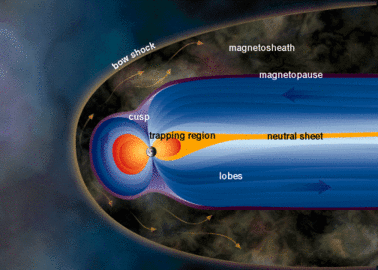 |
| Figure 1: The Solar Wind | Figure 2: The Magnetosphere |
Movie 1: Magnetic Reconnection (mov, avi)
Movie 2: Magnetic Substorms (mov, avi)